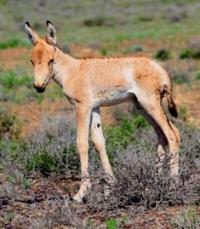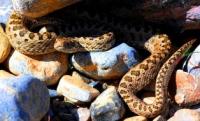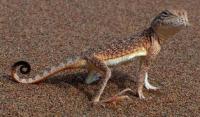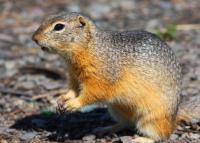You are here
Fauna of Semirechye deserts.







Ethnographic tourism in Kazakhstan.
“Nature abhors annihilation”
Marcus Tullius Cicero.
Adventure tourism in deserts Kazakhstan.
The fauna of Semirechye deserts is very peculiar. Here with the animals and birds typical for other habitats, there live the types peculiar only to desert ecosystems. Treat animal cosmopolitans a wolf, a fox, hare, a spotty cat, a polecat, a mouse and others.
To typical sandy animals the gopher different from the brothers a lonely way of life belongs - he never lives colonies and sleeps in the winter, other species of gophers usually sleep for 6 - 9 months in a year. A big sandwort - the large rodent living in sands.
This typical colonial animal living big families in the holes connected by the numerous underpasses forming emptiness in which incessantly you fail if you pass across the colony territory. Small, or midday, the sandwort is numerous in sands too, unlike big lodges couples and leads a nocturnalism.
Night small animal is the typical inhabitant of the desert the rough legged jerboa reminding a structure of a body of a kangaroo. A way of its movement too it does not use a kangaroo at run forward pads, moving at the same time with such speed that makes an impression of flying.
Length of this kid only a little more than 10 centimeters, but jumps of a jerboa are huge - reach 1,5 meters in length. In sands it is possible to meet characteristic, very rare night small animal - a shrew, or путорак, - surprisingly graceful, silver-gray color with a white spot on a back.
As well as all insectivorous, putorakк differs in big mobility and courage - it is not content only with catching of insects, and to attack rather large animals, for example lizards, and often at the same time it appears the winner. O
ne more representative of insectivorous - a big-eared hedgehog - the ordinary inhabitant of sands, leads a nocturnalism. This small small animal usually eats insects, as required mice, lizards and small snakes can become his production.
At the beginning of the century in deserts Semirechye herds of goitred gazelle (Gazella subgutturosa) and pendents were frequent. Now it is difficult to meet a dzheyran, pendents disappeared in a natural situation absolutely.
The bird's world in the desert does not differ in abundance of types that is explained by monotony of habitats. From birds of prey live an eagle a burial ground, a steppe eagle here, fish-eating - a sea eagle белохвост and a skopa - all of them rare and are included in the Red List of Kazakhstan.
The bustard the beauty, or Jack having ability to rapid run, for what in the people the name "tszhurg", that is an ambler belongs to the category of rare. Seldom the common jau (Carrulus glandarius) jay living only in barkhans - beautiful, average size a bird, also excellent runner meets.
The dikkop (Burhinus) - a night bird with the huge mysterious yellow eyes reminding owl's is very peculiar. It very reluctantly uses wings and as many other birds of open spaces, prefers to run. From small birds in sands the desert warbler (Sylviidae), a warbler (Sylviidae), the field fad, a desert sparrow, desert чекан and some other meet.
Reptiles can be considered owners of the desert. Are most numerous among sands of a lizard whose traces are covered barkhans. They are very well adapted for life in sands. So, the big-eared toad agams (Phrynocephalus) typical for Semirechya has on paws the peculiar combs increasing the area of a support and allowing it not to fail in sand.
This lizard has protective patronizing coloring, with the advent of danger it by means of special gestures can quickly plunge into sand, rolling in it, as in water. During a strong heat usually hides in holes. Toad agams (Phrynocephalus) the coquette - the inhabitant of the fixed sands.
It by the sizes is twice less than big-eared, is very similar to it the behavior, only her tail is more mobile and expressive. Sometimes on tops of bushes it is possible to see quite large lizard - the male of an agama surveying and protecting the territory from invasion of rivals.
Mesh and striped skapteyra and dexterous lizards who cannot almost be caught without special devices are typical for sands: zoologists for its precipitancy call not incidentally striped skapteyra "a lightning of sands".
And here a Tusrkestan plate-tailed gecko (Teratoscincus Scincus) - the complete antithesis to other lizards. This clumsy, with a large head and big-eyed being has pale coloring with the dark drawing, usually has a nocturnalism and in the afternoon on a surface is not shown.
Unlike other species of lizards at it the tail which some time continues to be bent convulsively very easily can be broken off, making at the same time the chirring sounds. Apparently, this property very much helps a gecko a minute of danger - the attention of the attacking predator distracts that successfully helps to disappear to the owner of a tail.
Desert lacertas (Eremias) bystry, average and a squeaky geckos (Gekkonidae) are less typical for Pribalkhashya. The special group of reptiles is made by snakes. Them a little more than five types from which the sandy sand boas (Eryx), an arrow of a dragon, a viper and a copperheads and cottonmouths (Ajkistrodon) are widespread are found here.
The sandy sand boas (Eryx) though does not differ in the large sizes of a body, but hunts as well as his larger fellows are the real boas, watching for the victim, having buried in sand and having exposed outside only a muzzle tip with the eyes shifted on the top half of the head.
Having promptly grabbed the victim, the sand boas (Eryx) instantly twists it with the body, smothers and begins to swallow. Sand boas (Eryx) is not really mobile, not at once it is possible to define where he has a head and where a tail.
It is not poisonous and for people does not constitute big danger. And here the sting of a viper and a copperheads and cottonmouths (Ajkistrodon) is quite painful for the person. It is necessary to remember that snakes never intentionally attack the person and can bite only at the moment of danger or when they are disturbed. Interesting feature distinguishes a viper and a copperheads and cottonmouths (Ajkistrodon) from other snakes - they do not lay some eggs, they give birth to live cubs.
All reptiles are very peculiar, are in own way beautiful and extremely useful. Lizards, compensating limited quantity of birds in deserts, destroy the mass of various insects, interfering with their reproduction. Snakes are specialists in destruction of rodents, constraining their number, they promote preservation of vegetation.
The examples only given say that the ecological role of reptiles in maintenance of natural balance is very big.
Authority:
"In the region of Seven rivers. Zhetysu". Author and originator B. Gubanov. Alma-Ata, Kaynar publishing house, 1989.
Photos
Alexander Petrov.







